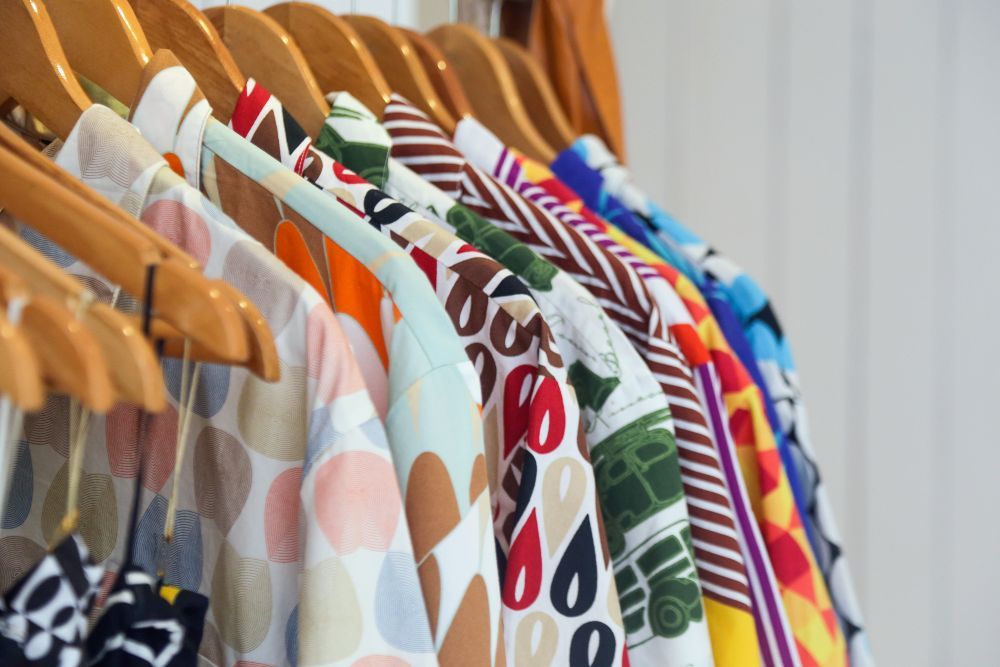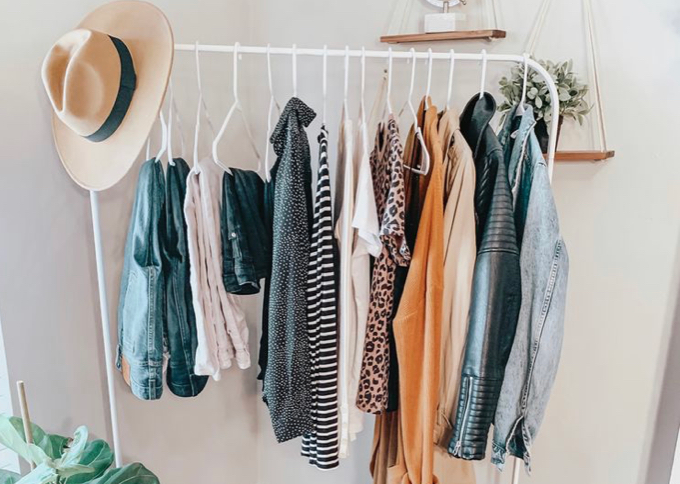When you run your fingers across a perfectly draped silk blouse or feel the substantial weight of a well-constructed cotton dress, you’re experiencing more than just texture—you’re touching the environmental story of your clothing. At Waynezen, we believe that true style begins with understanding what our clothes are made of and how those materials affect our world.
The Hidden Life of Your Clothing
Every fabric has an origin story that extends far beyond the retail floor. Before becoming the garment hanging in your closet, each piece traveled through a complex journey of resource extraction, processing, manufacturing, and transportation—each step leaving its unique environmental footprint.
Fabric Impact Guide: Making Informed Choices
Understanding fabric sustainability doesn’t require an environmental science degree. This comparative guide breaks down common fabrics and their ecological considerations:
| Fabric Type | Water Usage | Chemical Input | Biodegradability | CO2 Footprint | Waynezen Approach |
|---|---|---|---|---|---|
| Conventional Cotton | Very High | High (pesticides) | Good | Moderate | Limited use, GOTS certified only |
| Organic Cotton | High | Low | Good | Low-Moderate | Prioritized for direct-skin contact items |
| Polyester | Low | High | Poor (200+ years) | High | Reserved for performance needs, increasingly recycled |
| Linen | Low | Low | Excellent | Very Low | Featured prominently in summer collections |
| Wool | Moderate | Varies | Excellent | Moderate | Sourced from certified humane farms |
| Tencel/Lyocell | Low | Low (closed-loop) | Good | Low | Key transitional-weather fabric |
| Silk | Moderate | Varies | Good | Low-Moderate | Used in premium pieces, peace silk preferred |
| Recycled Polyester | Very Low | Moderate | Poor (200+ years) | Low | Used in outerwear and technical pieces |
This matrix guides our design decisions, helping us balance performance needs with environmental responsibility. But the story doesn’t end with fabric selection.
The Waynezen Garment Journey: From Fiber to Forever
Understanding the complete lifecycle of clothing helps illuminate the true environmental cost—and how thoughtful design can minimize impact.
1. Material Sourcing
When selecting fabrics for our collections, we assess:
- Geographic origin and farming/production practices
- Certification standards (GOTS, OEKO-TEX, etc.)
- Water and energy requirements
- Chemical inputs and processing methods
- Labor conditions and community impact
Rather than accepting industry standards, we visit our suppliers personally, building relationships with those who share our vision for a more sustainable fashion industry.
2. Design & Production
Our commitment continues through:
- Pattern efficiency to minimize fabric waste
- Digital sampling to reduce material consumption
- Low-impact dyeing processes
- Water recycling in manufacturing facilities
- Energy-efficient production techniques
“We can save up to 30% in fabric waste through thoughtful pattern design alone,” explains Jana Mitchell, Waynezen’s Head of Production. “It’s about seeing the environmental opportunity in every step of the process.”
3. Distribution & Use
Our environmental consideration extends to:
- Plastic-free packaging using recycled materials
- Carbon-offset shipping options
- Educational care guides for optimal garment longevity
- Repair services for extending garment life
4. End-of-Life Solutions
Even at the end of a garment’s life with you, we remain engaged:
- Take-back program for recycling worn Waynezen pieces
- Fabric upcycling initiatives for damaged items
- Biodegradable components whenever possible
Caring for Your Fabrics: Extending Life While Reducing Impact
The environmental story of your clothing doesn’t end with purchase—how you care for garments significantly affects their ecological footprint:
Cotton & Linen
- Wash in cold water to preserve fibers and save energy
- Line dry when possible (saves up to 700 pounds of carbon annually)
- Turn inside out to reduce visible wear
Silk & Wool
- Spot clean rather than washing when possible
- Use gentle, pH-balanced detergents
- Air out between wears rather than washing
Synthetic Blends
- Use microfiber-catching laundry bags to prevent plastic pollution
- Wash at lower temperatures to reduce microfiber shedding
- Avoid high-heat drying which degrades elastic fibers
The Innovation Horizon: What’s Next in Sustainable Textiles
As we look toward the future, Waynezen is actively exploring emerging fabric technologies that further reduce environmental impact while maintaining our quality standards:
- Mycelium-based leather alternatives: We’re partnering with biotechnology firms developing mushroom-derived materials with leather-like properties but minimal environmental impact.
- Agricultural waste fibers: Our research team is testing fabrics derived from pineapple leaves, orange peels, and other food industry byproducts.
- Closed-loop recycled cellulosics: Advanced recycling processes that transform post-consumer cotton into new cellulosic fibers with minimal chemical processing.
- Carbon-negative materials: Innovative fabrics that sequester more carbon in their production than they release.
“The most exciting innovations are happening at the intersection of traditional textile knowledge and cutting-edge science,” notes Dr. Amara Jackson, Waynezen’s Materials Innovation Consultant. “We’re particularly interested in solutions that don’t just reduce harm but actively benefit ecosystems.”
A Conversation with Our Fabric Specialist
We sat down with Eliza Chen, Waynezen’s Fabric Sourcing Specialist, to understand how material decisions shape our collections:
Q: What’s the biggest misconception about sustainable fabrics?
“That they’re necessarily less luxurious or functional. The reality is that many of the most environmentally responsible fabrics are also exceptional performers in terms of comfort, drape, and longevity. Nature has spent millions of years perfecting materials—we’re simply learning to work with them more thoughtfully.”
Q: How do you balance aesthetics with environmental considerations?
“It’s not actually a trade-off. When we demand both beauty and responsibility, we often discover solutions that exceed expectations on both fronts. For example, our peace silk not only addresses ethical concerns but actually produces a more subtly textured, character-rich fabric than conventional silk processing.”
Q: What fabric innovation are you most excited about?
“I’m particularly excited about regenerative agriculture’s impact on natural fibers. Cotton grown using regenerative practices not only uses less water and chemicals but actually helps sequester carbon and rebuild soil health. The fabric quality improves while the environmental impact reverses from negative to positive.”
Your Fabric Choices Matter
Every garment purchase is a vote for the kind of fashion industry you want to support. By understanding the environmental implications of different fabrics, you empower yourself to make choices aligned with your values.
At Waynezen, we believe the most beautiful designs are those that honor both the wearer and the world we share. We invite you to experience our Eco-Conscious Collection, where exceptional style meets environmental responsibility—because the most sustainable fashion is that which you’ll treasure for years to come.




